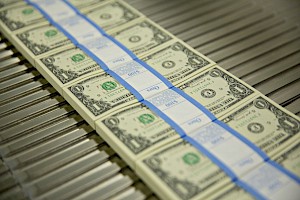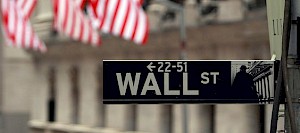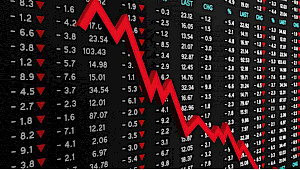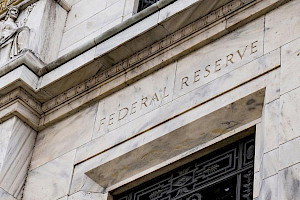Why the U.S. is heading for hyperinflation — and what will happen when it arrives
June 11, 2024Originally published in The Toronto Star on June 4, 2024 as contributing columnist
In politics it is necessary either to betray one’s country or the electorate. I prefer to betray the electorate. - Charles de Gaulle
In the opinion piece I wrote last week, I warned of a looming financial crisis in the U.S. (and other Western nations) fuelled by spiralling debt, money printing and a broken political system — and that most people will be unprepared.
Although much of the population is anxious, no one can imagine a worst-case scenario, simply because unlike my parents’ generation, our generation has never experienced the effects of a depression, hyperinflation, or war. The sad reality is that history has shown us that these cycles occur every 70 to 100 years and the patterns leading up to these crises are recognizable.
Unlike most individuals in the West, the rest of the world is preparing for a worst-case outcome. The Ukraine and Gaza wars have split the global community into competing camps: the West and the East, the G7 and the BRICS Plus nations. The Global South is trying to stay neutral but increasingly, Russia and China are pulling ahead in the war for the hearts and minds of many poorer nations.
The biggest battle in this East versus West confrontation will be over the U.S. dollar’s reserve status. The idea that the dollar will remain the supreme currency no matter what because ‘there is no alternative’ (TINA) is being quickly disproven, and the U.S. is now witnessing ‘the ugly new alternatives’ (TUNA). Nations around the world are increasingly turning to other mechanisms to trade outside the U.S. dollar system and replacing U.S. dollar reserves with gold bullion.
Printing money will be a vicious, uncontrollable cycle
So, how will a major crisis manifest itself? Firstly, as the U.S. runs out of foreign buyers for its Treasuries, the Fed will need to step in as it has in the past and become the buyer of last resort, but this time in much greater quantities. To do this it will have to print money — a lot of money.
Further money printing will scare away remaining buyers of U.S. debt, which will require higher long-term rates to compensate for the additional risk, which will in-turn require even more money printing by the Fed to keep rates down becoming a vicious and uncontrollable cycle.
Once it is evident the spiral is uncontrollable, panic will set in and that’s when hyperinflation will come into play. What happens after that is difficult to predict and almost too scary to talk about: Societal implosion and external conflicts are just a couple of possible outcomes. None of it is pretty.
Once U.S. policymakers sense an impending crisis, they will move swiftly to protect the system. And that means sacrificing the individual. Every nation has rolled out the same playbook throughout history. We will see capital controls, meaning you cannot convert your U.S. dollars to other currencies or export your money outside the country.
Even scarier, the Dodd-Frank Wall Street Reform and Consumer Act passed by Congress in 2010 eliminated the option of bank bailouts, but opened the door for bank bail-ins. Simply put, bail-ins means the banks can confiscate your deposits if they run into financial trouble.
Your portfolio should be heavily skewed to hard assets
Finding ways to protect yourself from an impending crisis is not an easy task as there are so many variables to consider, and each one might require a different action. That said, it’s fair to say that the 60/40 traditional stock/bond portfolio is no longer valid.
Owning bonds is a guaranteed losing proposition in an inflationary environment. Stock picking will be a lot trickier than the passive ETF investing strategy many are accustomed to. I would rotate out of overpriced tech stocks and move into more defensive stocks. Your portfolio should be heavily skewed to hard assets, including commodities such as metals, energy and food which have traditionally done well in inflationary times.
Geography is important as well. U.S. stocks are extremely overvalued as compared to emerging markets. It’s also perfectly legal to have bank accounts in other jurisdictions denominated in other currencies. This might provide protection in the event of capital controls.
That said, owning other currencies is not the best way to store value. Most fiat currencies are in a devaluation race to the bottom. Choosing one currency over another is like choosing between a cruise on the Bismarck or the Titanic. Of course, you need to have some cash in your portfolio in the event of a severe market crash which may precede or follow high inflation.
Which leads us to gold.
I may sound like a broken record, but I have not been wrong during the past two decades. Gold has outperformed stocks and bonds since 2001 and it will continue to perform, only now at an accelerated rate. When all else fails, gold is, and always has been, the last man standing — hedge against human stupidity.
How high gold can go is anyone’s guess
Non-Western central banks and individual investors in BRICS nations have been buying large quantities of physical gold at an accelerating rate. They see the writing on the wall. In our part of the world, we are warned off gold by Wall Street and the financial media that is their mouthpiece.
How high gold can go is anyone’s guess. It is a function of how far fiat currencies will fall. Here are a few data points to consider as a reminder of how gold performs against failing currencies. In Turkey, the gold price has gone up sevenfold in three years in lira terms.
In Argentina, it’s gone up 10-fold. Even in yen terms, it has doubled. Furthermore, had I told you in 1971 that gold would go up 27-fold in 10 years, would you have believed me? Well, it did. Ditto, if in 2001 I predicted it would go up eightfold in the next decade? The past is a powerful teacher.
For ultimate security, I recommend investing in physical gold, whether in bars or coins. The fine print in gold ETFs’ prospectuses ensure that in a crisis, your gold will not be available when you need it most. If you are willing to take on additional risk, own some gold mining shares with a low cost of production.
All of this may make me sound like Chicken Little, but I urge you to dust off your history books. It’s all there in black and white. Technology may advance, but human nature stays the same. It would be prudent to prepare yourself. Anything less is reckless.










